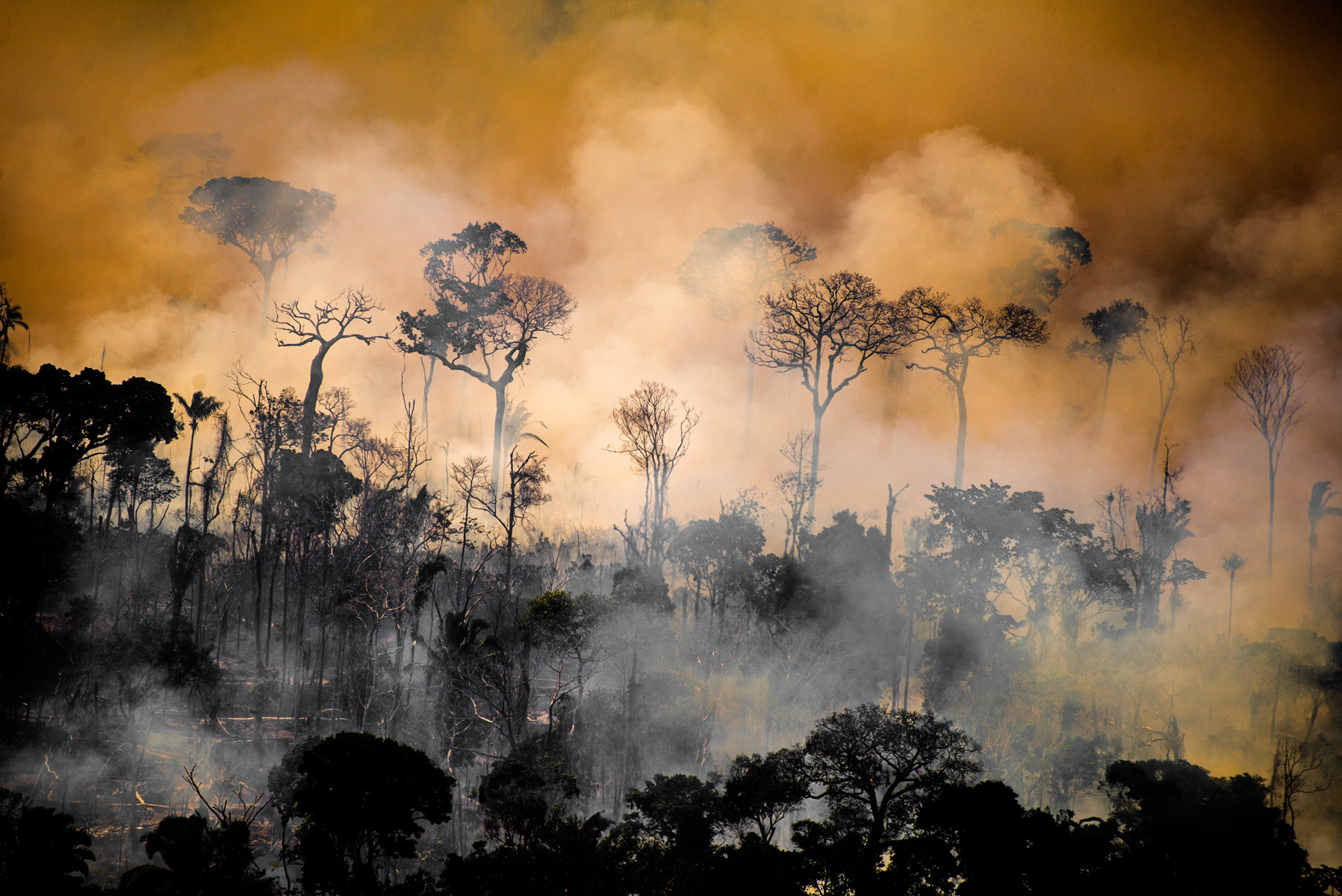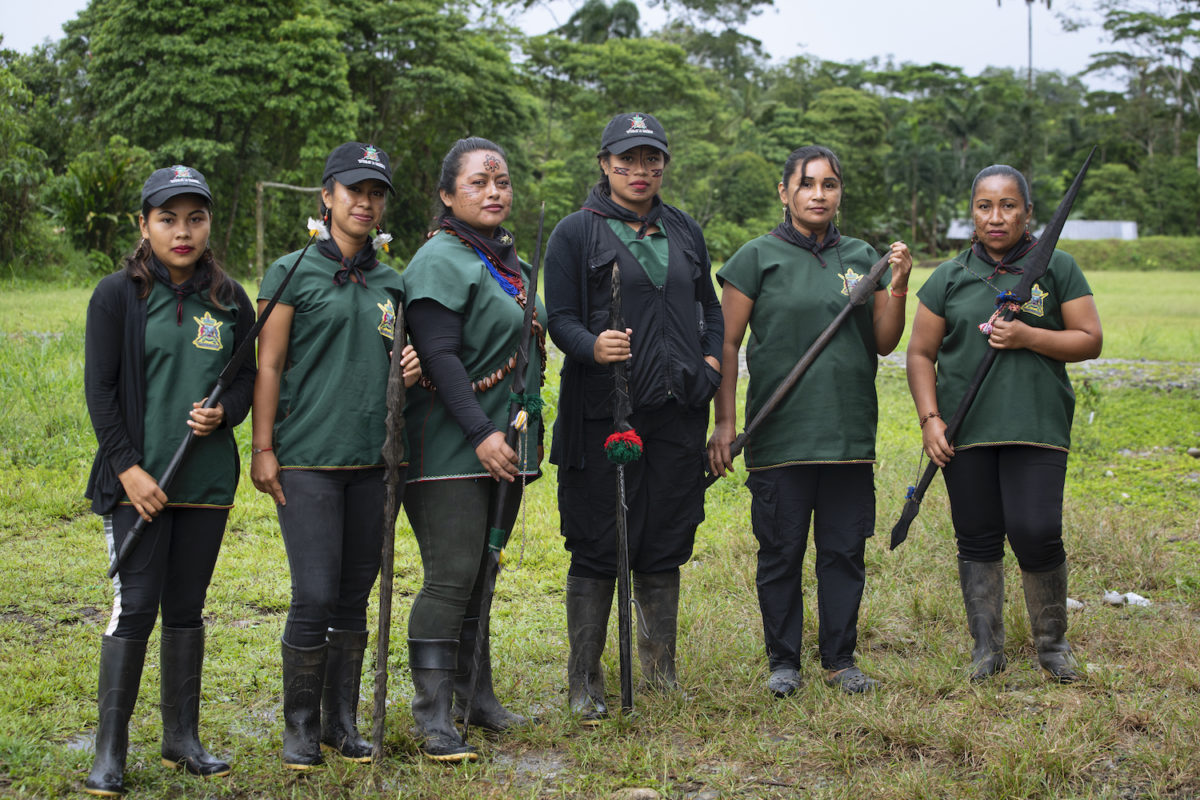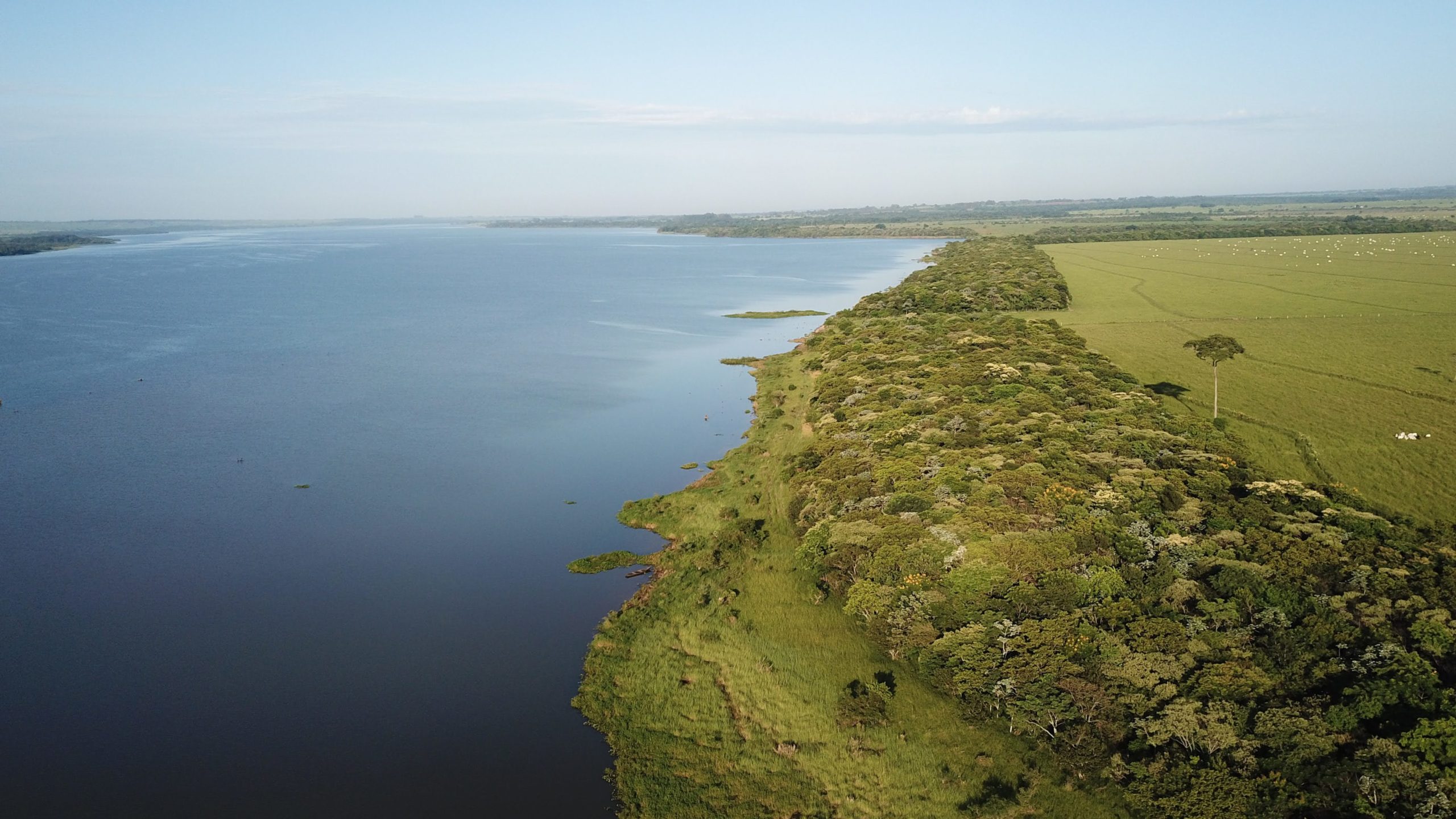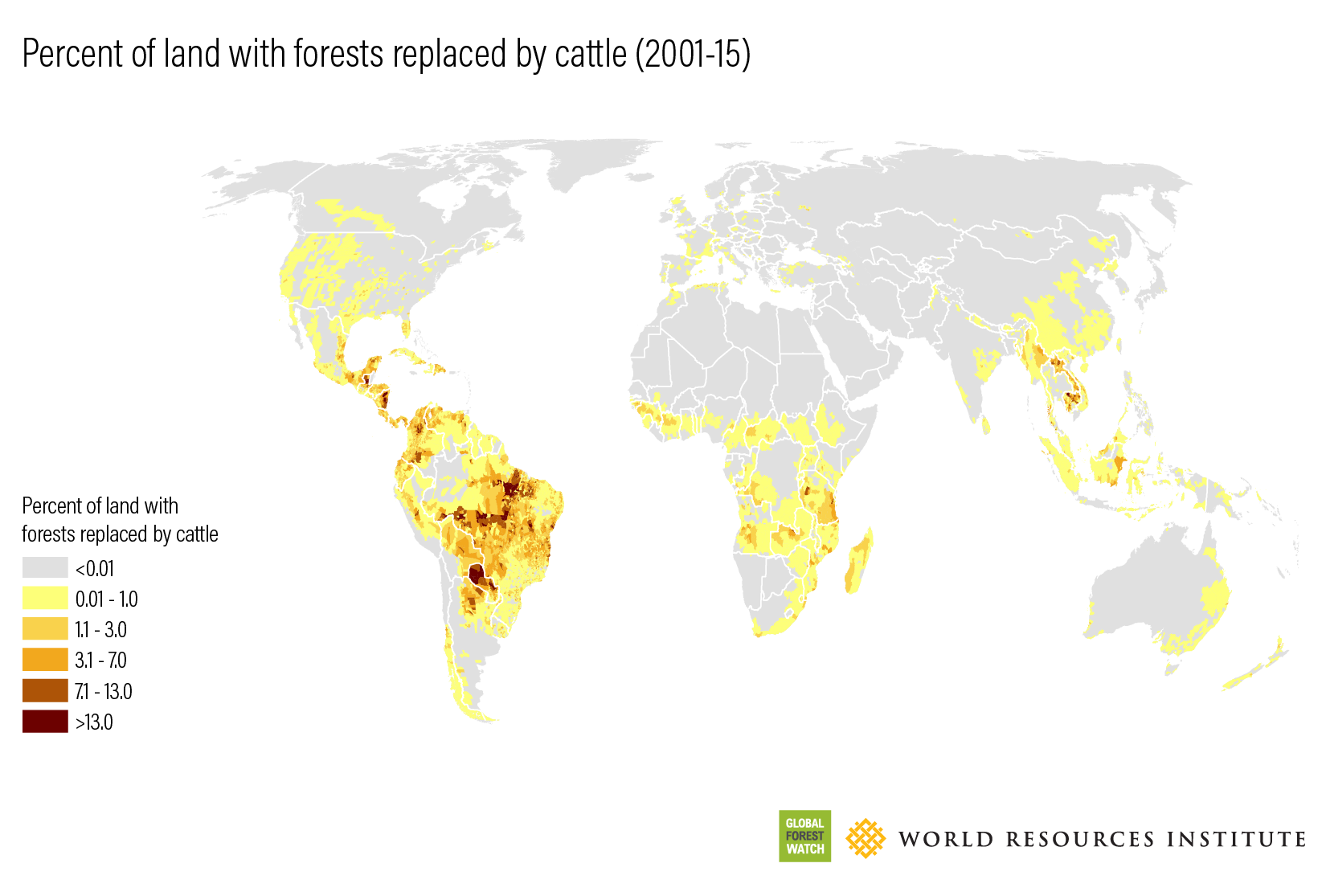- According to experts, we have passed the planetary boundary for land systems change — the human-caused loss of forest — and risk destabilizing Earth’s operating systems.
- Scientists calculate we must retain 85% of tropical and boreal forests, and 50% of temperate forests, to stay within Earth’s “safe operating” bounds, but the number of trees worldwide has fallen by nearly 50% since the dawn of agriculture.
- From 2001 to 2021, forest area roughly half the size of China was lost or destroyed across the planet; in 2021, tropical forests disappeared at a rate of about 10 football fields per minute.
- Despite these losses, solutions abound: Some of the actions that could bring us back into the safe operating space are securing Indigenous land rights, reforestation and landscape restoration, establishing new protected areas, redesigning food systems, and using finance as a tool
Just weeks after visiting a patch of Malaysian rainforest, Mongabay founder Rhett A. Butler learned it had been logged for wood chips to supply a paper plant. A teenager at the time, Butler recalls being devastated.
“This place of wonder and beauty was lost forever,” he wrote in a 2018 story. “The orangutan, the hornbills, the butterflies, and even the leeches would have to make do in their dramatically changed environment.
“I was at a loss for words when I would try to explain my sadness to my grade-school friends,” he went on. “Why, they asked, did I care about the destruction of a distant mosquito-ridden forest? … So I started writing.”
Eventually, this writing morphed into Mongabay.com, the website you’re now reading that draws millions of views per month and daily tells the story of our rapidly transforming planet. That story is largely one of land systems change: humans altering the land, destroying forests and other habitats, only to replace it with pastures and plantations, mines, roads and other infrastructure.
Land systems change is one of the nine planetary boundaries first defined by an international group of scientists at the Stockholm Resilience Centre (SRC) in 2009. The planetary boundary framework suggests that Earth has critical operating systems, each precariously balanced like a vehicle descending safely down a steep mountain road. But once humanity violates a planetary boundary, we risk destabilizing Earth’s operating systems and potentially heading over an existential cliff beyond which life as we know it, and humanity itself, is gravely threatened.
“Transgressing a boundary increases the risk that human activities could inadvertently drive the Earth System into a much less hospitable state, damaging efforts to reduce poverty and leading to a deterioration of human well-being in many parts of the world, including wealthy countries,” says Will Steffen, a professor and researcher at the SRC and the Australian National University, Canberra.
Crossing the land systems boundary
When it comes to conserving natural lands, scientists calculate we must retain 85% of tropical and boreal forests, and 50% of temperate forests, to stay within Earth’s “safe operating” bounds: These percentages reflect how much intact forest needs to be maintained, compared to the total area of natural vegetation that would exist without any human interference.
By falling below those percentages, humanity increasingly puts the vital ecosystem services that forests provide — such as absorbing CO2 from the atmosphere, generating rain, holding land in place, and supporting biodiversity — at serious risk.
Based on these percentages, we’ve already very likely crossed the land use boundary. The number of trees worldwide has fallen nearly 50% since the dawn of agriculture, roughly 12,000 years ago. By some estimates, more than 15 billion trees are felled every year.
Deforestation is escalating, with most forest loss occurring in just the past few decades. From 2001 to 2021, forest area measuring roughly half the size of China (more than 437 million hectares, or 1.08 billion acres) was lost or destroyed across the planet, according to new data from the University of Maryland available on Global Forest Watch.
In 2021 alone, 11.1 million hectares (27.4 million acres) of tropical forests were destroyed, disappearing at a rate of about 10 football fields per minute. Nearly a quarter of that loss was in primary, old-growth rainforests, some of Earth’s greatest safe havens for plant and animal life, and for carbon storage.
More than 40% of primary forest loss in 2021 occurred in the Brazilian Amazon, driven largely by fires that are set deliberately to clear land primarily for beef cattle ranching and soy farming.

Boreal forests, the conifer forests of the planet’s north, take second place in these grim statistics. More boreal forest was toppled in 2021 than ever before, soaring 29% over 2020. This increase was driven by an unprecedented fire season in Russia, the worst on record, which burned an area roughly twice the size of Belgium. Although fires are naturally occurring in boreal ecosystems (unlike in tropical rainforests), climate change has brought hotter, drier conditions, making wildfires far more likely.
All of this forest loss is bad news for Earth’s climate (another planetary boundary we blazed past in recent decades), as well as biodiversity (yet another violated boundary). In truth, Earth’s operating systems don’t operate in isolation. Trespass across and destabilize one boundary, and others will be destabilized, putting multiple systems at risk, like toppling a Jenga tower.
“The land is what we change and that affects the climate system,” said Peter Verburg, a professor and lead of the Environmental Geography Group at the Institute for Environmental Studies, Vrije Universiteit Amsterdam, the Netherlands. “If we cut down trees or remove vegetation, we remove the carbon sequestered in that vegetation and put it into the atmosphere.”
“Land is the connector between biodiversity and climate change, between humans and nature,” said Miriam Medel, the chief of external relations, policy and advocacy for the U.N. Convention to Combat Desertification (UNCCD).
A planetary boundary framework critique
The planetary boundary framework, while providing a useful model for measuring change, is not fully accepted by all scientists. Some note that because the nine boundaries are all so deeply interconnected, it can be challenging to separate them out and evaluate each individually in a meaningful way. This is especially true for land system change, which underpins and influences nearly every other boundary.
Another criticism is that the land system boundary focuses on forests exclusively, and not on any other ecosystem type. Wetlands, savannas and peatlands all hold immense biodiversity, provide vital ecosystem services, and play huge roles in climate mitigation and the maintenance of other Earth operating systems. “Land use is about more than forests,” Verburg said.
However, many experts agree that the framework provides a useful tool for visualizing and measuring our planetary transgressions — and for prompting action. Watching an Earth operating system inch from yellow to red is alarming, and might lead to paralyzing despair. But those flashing red lights could also inspire us to find solutions, which now abound. What follows are just a few of the actions that could push forests from the red zone back into the green.

Land system solution #1: Securing Indigenous land rights
Increasingly, the world is awakening to the importance of securing the land rights of Indigenous communities as an equitable, low-cost, and highly effective way of protecting the environment. An estimated 36% of ecologically intact forests and 80% of planetary biodiversity lie within Indigenous peoples’ territories. Empower them, and they could guide forest conservation.
A study by political scientists published in 2020 concluded that Indigenous peoples were the best stewards of the Amazon Rainforest, but only when their property rights were safeguarded by government enforcement. Others found that large, legally protected territories are necessary for Indigenous peoples in Brazil to maintain their culture as well as local biodiversity.
At the COP26 summit last year in Scotland, national governments and funders pledged $1.7 billion toward supporting Indigenous peoples and local traditional communities to protect forests. Questions remain, however, as to whether those promises will be fulfilled.
“Unfortunately, many [forest] restoration efforts treat communities as potential beneficiaries … not the actual artisans of that change,” Alain Frechette, director of strategic analysis and global engagement at the Rights and Resources Institute (RRI), an NGO working to encourage forest tenure and policy reforms, told Mongabay. He stressed the importance of Indigenous-led and -managed projects if land is to be effectively protected.
Land system solution #2: Reforestation and landscape restoration
The United Nations officially declared the 2020s the Decade on Ecosystem Restoration, asking nations across the globe to restore 1 billion hectares (2.5 million acres) of degraded land, an area larger than China. This makes both ecological and economic sense, say experts, as half of global GDP relies on nature and, by some estimates, every dollar spent on restoration yields $30 in benefits.
Over the past two decades, an area of forest larger than France (58.9 million hectares, or 146 million acres) has been completely regrown, an assessment conducted by three NGOs (BirdLife International, WCS and WWF) concluded. The trees grown on these lands could potentially sequester more carbon dioxide than the annual greenhouse gas emissions of the United States.
Tree planting has become a hot topic in recent years, with millions replanted already, and many more millions promised. But while planting trees is a good thing, ensuring they grow to their full, carbon-storing stature is quite another thing, and far more challenging.
In fact, trees planted in the wrong place can do more harm than good, while tree plantations grown as harvestable crops often don’t store carbon for long. To evaluate reforestation efforts, Mongabay launched an online database of tree-planting projects in 2021 in hopes of increasing transparency for potential tree-planting donors. The Mongabay Reforestation Directory rates publicly available information on 350 projects in 80 countries using 36 expert-defined criteria.
Experts caution that forest regeneration doesn’t offset the loss of natural forests, with all of their complexity. So protecting existing forests remains priority number one.
“Replacing lost forests is practically impossible,” says the NGO Trillion Trees. “It would take decades or even centuries for a regenerated ‘secondary forest’ to become as rich in carbon and wildlife as an existing, old-growth forest, and some ecosystems can never recover from deforestation.”

Land system solution #3: Establishing new protected areas
It’s much harder, and costlier, to regrow a forest than to protect an existing one. Preserving intact forests is critical to preserving biodiversity and keeping carbon in the ground, as well as a means of safeguarding the freshwater planetary boundary.
Designating and enforcing protected status for land, and ensuring IPLC land rights and ownership are both critical to conserving forests. This year, several large new protected areas were established, offering examples for the world to follow in the future.
For example, Myanmar protected 156,000 hectares (386,00 acres) of remote, high-altitude forest, home to the critically endangered Myanmar snub-nosed monkey (Rhinopithecus strykeri) and the red panda (Ailurus fulgens).
Two new protected areas have also been established in Nepal’s Himalayas, spanning a combined area one-third larger than New York City. Covering nearly 106,000 hectares (262,000 acres), the newly protected areas offer a stepping stone to creating and conserving critical wildlife corridors linking Nepal’s lowlands with alpine areas where animals such as the Indian pangolin (Manis crassicaudata), snow leopard (Panthera uncia) and Himalayan black bear (Ursus thibetanus laniger) live.
Land system solution #4: Redesigning food systems
Seven major commodities account for more than half of all tree cover loss associated with agriculture over the past two decades. According to the World Resources Institute, cattle replaced more forest than any major commodity (45.1 million hectares, or 111.4 million acres), accounting for 36% of all tree cover loss between 2001 and 2015. Oil palm ranks next (10.5 million hectares, or 25.9 million acres), followed by soy (8.2 million hectares, or 20.3 million acres), then cocoa, plantation rubber, coffee, and plantation wood fiber (including timber, toilet paper, and forest biomass burned to produce energy).

However, native forests needn’t be destroyed, if only humanity could get its waste problem under control: “Of all the food produced in the world each year, approximately one-third by weight and one-quarter by calories is lost or wasted at various stages between the farm and the fork,” according to the 2021 WRI report “Creating a Sustainable Food Future.”
That report suggests humanity can reduce demand on agricultural systems globally by adopting food-loss and waste-reduction strategies such as improved inventory management and better purchasing agreements, which would allow food suppliers to efficiently plan distribution, and improve food storage facilities and harvest methods.
Changes to the way we farm, including more focus on agroecology, regenerative agriculture, and practicing protections for soils, could all help ease the environmental pressures of industrial agriculture while protecting biodiversity and freshwater. There is some evidence that regenerative farming boosts soil health, yielding more nutritious crops.
Land system solution #5: Follow the money
Investments and government subsidies now often fuel deforestation, but could just as easily support conservation. In fact, pressure is mounting today for companies that produce and sell major agricultural commodities to address deforestation within their operations and supply chains.
At the COP26 climate conference last year, more than 30 financial institutions managing more than $8.7 trillion in assets committed to working toward eliminating agricultural commodity-driven deforestation in their investment and lending portfolios by 2025. Additionally, 10 companies with a combined annual revenue of nearly $500 billion committed to halting forest loss associated with agricultural commodity production and trade.
However, while many such pledges are very long on PR value, they often tend to be short on follow-through. Data from CDP, a nonprofit that advocates for greater corporate disclosure on environmental impacts, show that few deforestation commitments by companies are supported by policies or enforcement. Holding these companies and other institutions to their promises would require strong, legally binding accountability frameworks, along with thorough product supply chain tracing from seed to sale. Tools such as TRASE now provide supply chain mapping, but they don’t yet have the capacity to monitor at the detailed scales needed to change industries and halt deforestation.

Stepping back from the abyss
Ultimately, a large suite of simultaneous solutions needs to be rapidly implemented if humanity is to keep forest loss in check and Earth within its “safe operating space.”
Failure to do so — and quickly — could lead to catastrophe, the SRC scientists warn. But acting now could yield huge social, economic and environmental benefits.
It’s clear that solutions await, but whether or not humanity has the political will to enact them is still to be determined. Just as clear is the compelling answer that teenage Rhett Butler could have offered to his friends so many years ago as to why forests matter: We almost certainly need them more than they need us.
Citations:
Rockström, J., Steffen, W., Noone, K., Persson, Å., Chapin III, F. S., Lambin, E. F., … Foley, J. A. (2009). A safe operating space for humanity. Nature, 461(7263), 472-475. doi:10.1038/461472a
Steffen, W., Richardson, K., Rockström, J., Cornell, S. E., Fetzer, I., Bennett, E. M., … Sörlin, S. (2015). Planetary boundaries: Guiding human development on a changing planet. Science, 347(6223), 1259855. doi:10.1126/science.1259855
Crowther, T. W., Glick, H. B., Covey, K. R., Bettigole, C., Maynard, D. S., Thomas, S. M., … Bradford, M. A. (2015). Mapping tree density at a global scale. Nature, 525(7568), 201-205. doi:10.1038/nature14967
Fa, J. E., Watson, J. E. M., Leiper, I., Potapov, P., Evans, T. D., Burgess, N. D., … Garnett, S. T. (2020). Importance of Indigenous Peoples’ lands for the conservation of intact forest landscapes. Frontiers in Ecology and the Environment. doi:10.1002/fee.2148
Baragwanath, K., & Bayi, E. (2020). Collective property rights reduce deforestation in the Brazilian Amazon. Proceedings of the National Academy of Sciences, 117(34), 20495-20502. doi:10.1073/pnas.1917874117
Begotti, R. A., & Peres, C. A. (2020). Rapidly escalating threats to the biodiversity and ethnocultural capital of Brazilian Indigenous Lands. Land Use Policy, 96, 104694. doi:10.1016/j.landusepol.2020.104694
Wang-Erlandsson, L., Tobian, A., van der Ent, R. J., Fetzer, I., te Wierik, S., Porkka, M., … Rockström, J. (2022). A planetary boundary for green water. Nature Reviews Earth & Environment, 3(6), 380-392. doi:10.1038/s43017-022-00287-8
Banner image of a fire in Krasnoyarsk, Siberia, just one region where fires are burned throughout Russia in 2020. Image by Greenpeace International.
Liz Kimbrough is a staff writer for Mongabay. Find her on Twitter @lizkimbrough
FEEDBACK: Use this form to send a message to the author of this post. If you want to post a public comment, you can do that at the bottom of the page.
This story first appeared on Mongabay
South Africa Today – Environment
This article is licensed under a Creative Commons Attribution-NoDerivatives 4.0 International License.
You may republish this article, so long as you credit the authors and Mongabay, and do not change the text. Please include a link back to the original article.











